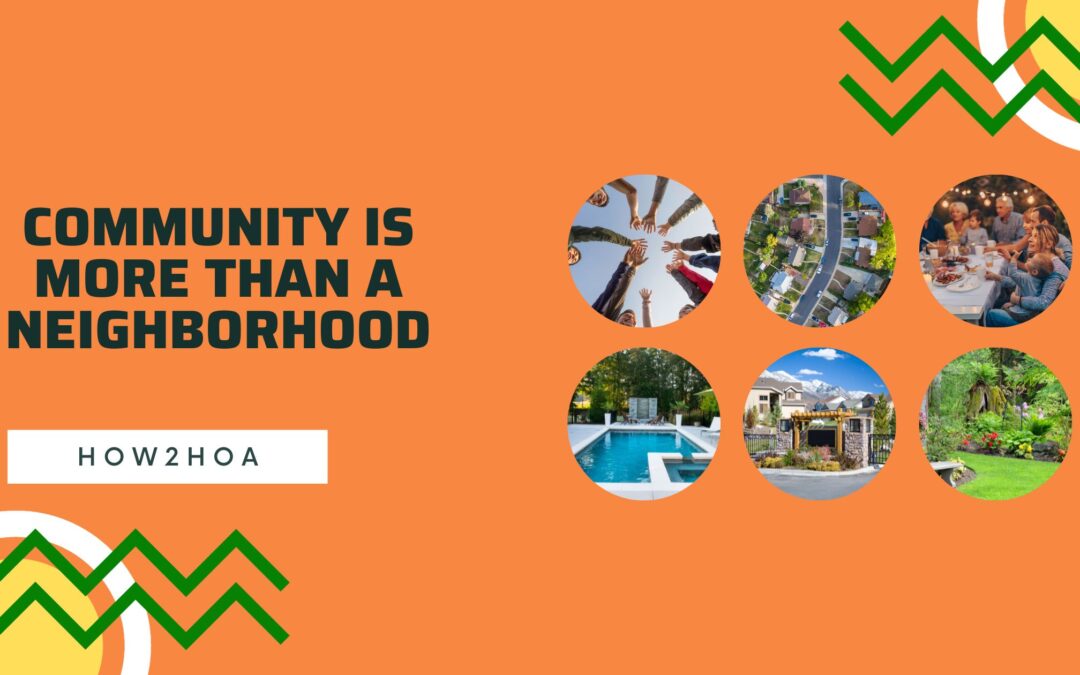We’ll be honest– HOA boards haven’t always received the greatest reviews. Historically, homeowners tend to look at their HOA boards as grumpy rule-makers. Eager to enforce their guidelines and keep you from having the home of your dreams. Of course, this is mostly a stereotype from movies or stories you heard from a friend of a friend. After all, the community is much more than a neighborhood.
In reality, HOA boards have the potential to truly transform neighborhoods. They have the potential to act as the backbone of a thriving community. For people that have lived in neighborhoods with a robust sense of community, it was likely the hard work and dedication of the board that created the connectedness between homeowners. In this article, we’re offering simple tips on how to avoid looking like the finger-wagging, nagging HOA board stereotype we’ve all come to know. We’ll also give some direction in creating a real sense of community in the neighborhood that you manage.
Get Familiar With the Community
One of the first tips in building a sense of community is by getting to know the homeowners. After all, you wouldn’t expect a new relationship to thrive if you didn’t take the time to get to know that person on a real level. It’s no different within the HOA world. One of the reasons homeowners tend to give a cold shoulder to their HOA boards is because they fail to see you as a fellow homeowner from the community. The HOA board feels like a higher, unknowable rule-making. When in reality you’ve probably faced a lot of the same issues other homeowners have dealt with!
Next, investing in the people around you will break down that wall. It will start to show members of the community that the board is there to first protect. Secondly, to preserve, and thirdly, to enhance the community value. Before you run off planning an extravagant kick-off event, let us offer you this one easy tip for community improvement…create an open line of communication. According to Kuester.com, many disputes between homeowners and HOA boards arise because homeowners are not aware or are not on the same page as the board in terms of rules and expectations.
Importantly, make it a key part of your work that you’re openly communicating guidelines and rules. Also, communicate any changes to the neighborhood to everyone in the community. Send out up to date and consistent newsletters to homeowners within the association. Create online or in-person questions and concerns submission form for homeowners. In addition, you can also actually take the time to answer the questions. Finally, be sure that you are regularly alerting every member living under the HOA of important meetings and events. It’s important to allow homeowners to have a voice at these meetings.
Organize a Welcoming Community
Another great way to create a sense of community in your neighborhood from the very start is by creating a welcoming committee. Spectrum suggests setting up a voluntary welcoming committee to greet newcomers to the neighborhood. Having a dedicated team whose purpose is to not only welcome new people to the neighborhood but also sheds good light on the HOA. Doing so from the very beginning might encourage newcomers to get involved in the association themselves!
Out of a welcoming community springs a multitude of other opportunities for people to volunteer and get involved. NJcooperator, an HOA tip website, explains that timing is everything when recruiting volunteers for involvement in the association. It’s suggested that inviting new residents to get involved is best done within the first six months of their move-in. This tends to be when they are still eager to learn the ropes of the neighborhood and meet new people.
Of course, an obvious and transformative way to cultivate a sense of community is by hosting events around the neighborhood. Monthly barbecues, seasonal festivals, and community pool parties are great ideas! Even neighborhood dinners can also work as an effective way to bring people closer together. It’s worth assigning monthly events and activities to a few members of your HOA board. They will act as liaisons between the community and the board for all events. Creating platforms for connectivity is a great way to help create more of a sense of community. You can do so through fun activities that encourage conversation and spark excitement
Give the Community a Voice
Part of the reason HOA boards and homeowners have experienced a lack of connectivity in their communities is that homeowners don’t feel like they have a voice that’s being heard. Outside of creating a platform for people to share concerns and suggestions for neighborhood improvement, taking the time to really listen to the community’s voice will help shape the way the community is run.
Understanding the demographics of different families, the cultural backgrounds, and the food each family shares, are all ways to genuinely get to know and learn about your community. Also, when you genuinely know the community around you, your HOA board will be equipped with a multitude of ways for others to get involved and make improvements to greater your community.

